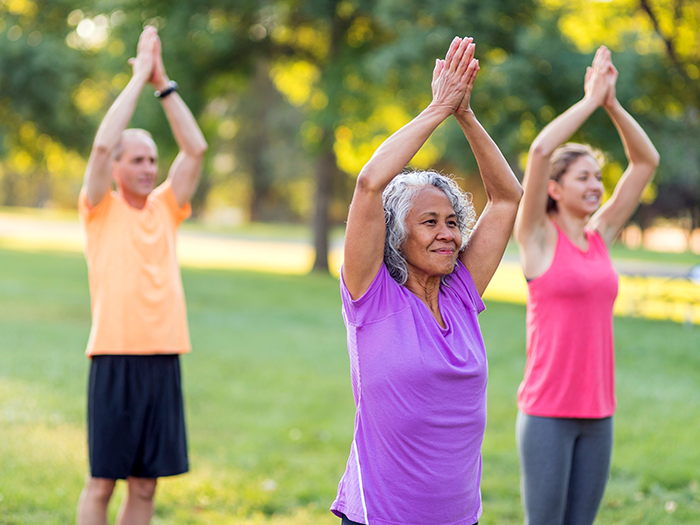You’ve had one of those days. The kind where everything feels overwhelming, your mind won’t stop racing, and that familiar weight of stress or anxiety settles in your chest like an unwelcome guest. Maybe you’ve been dealing with this for weeks, months, or even longer. You know you should probably exercise, but when you’re already feeling mentally drained, the idea of working out feels like just another impossible task on your endless to-do list.
Here’s what might surprise you: that workout you’re avoiding could be exactly what your mind needs. While we often think of exercise as something we do for our bodies, the mental health benefits of working out are so profound that many therapists now prescribe movement as part of treatment plans for depression, anxiety, and stress management.
The connection between exercise and mental health isn’t just feel-good fluff – it’s backed by decades of solid science. And the best part? You don’t need to become a fitness fanatic to experience these mood-boosting benefits.
The Science Behind Exercise and Mental Health
When you exercise, your body becomes a natural pharmacy, producing a cocktail of mood-enhancing chemicals that work better than many manufactured alternatives. Understanding what’s happening in your brain during and after exercise can help you appreciate why that post-workout glow is so much more than just physical exhaustion.
Endorphins: Your Body’s Natural High These are the chemicals most people associate with exercise, and for good reason. Endorphins are your body’s natural painkillers and mood elevators. They’re structurally similar to morphine and can create feelings of euphoria and well-being that last for hours after your workout ends. This is the famous “runner’s high,” but you don’t need to run marathons to experience it.
BDNF: Brain Fertilizer Brain-Derived Neurotrophic Factor sounds complicated, but think of it as fertilizer for your brain cells. Exercise dramatically increases BDNF production, which helps grow new brain cells and strengthens connections between them. This is particularly important for areas of the brain responsible for mood regulation, learning, and memory.
Neurotransmitter Balance Regular exercise helps regulate the production and function of key neurotransmitters like serotonin, dopamine, and norepinephrine – the same chemicals targeted by many antidepressant medications. Unlike medications, exercise helps your body learn to produce and regulate these chemicals naturally.
Stress Hormone Regulation Exercise provides a healthy outlet for stress hormones like cortisol and adrenaline. While these hormones serve important functions, chronic elevation can wreak havoc on your mood and mental health. Physical activity helps metabolize these stress chemicals and teaches your body how to return to baseline more quickly after stressful events.

How Exercise Transforms Your Mental State
The mental health benefits of exercise extend far beyond the immediate post-workout mood boost. Regular physical activity creates lasting changes in how your brain functions and how you handle life’s inevitable challenges.
Anxiety Relief That Actually Works If you’ve ever felt your heart racing with anxiety, you know how uncomfortable and overwhelming it can be. Exercise teaches your body the difference between the physical sensations of exertion and the symptoms of anxiety. When your heart rate increases during a workout, you learn that an elevated heart rate doesn’t automatically signal danger. This training helps reduce anxiety sensitivity and makes panic attacks less likely.
Many people with anxiety also struggle with the need to control their environment. Exercise provides a healthy way to channel that control need – you can control your workout intensity, duration, and type, giving you a sense of agency that often extends into other areas of life.
Depression’s Worst Enemy Depression often comes with a cruel irony: the things that would help you feel better are exactly the things that feel impossible to do. Exercise breaks this cycle in several ways. First, it provides structure and routine, which are crucial for managing depression. Second, it offers a sense of accomplishment, even if it’s just a 10-minute walk around the block.
The goal-setting and achievement aspects of exercise create positive feedback loops. Each workout completed is evidence that you can follow through on commitments to yourself, rebuilding self-trust and confidence that depression often erodes.
Stress Becomes Manageable Regular exercise changes how your nervous system responds to stress. People who exercise regularly show lower cortisol responses to stressful situations and recover more quickly when stress does spike. It’s like building up your stress resilience muscles – the more you train them, the stronger they become.
Exercise also provides what psychologists call “active coping” – a way to do something constructive about stress rather than just enduring it. This sense of agency is crucial for mental health and helps prevent the feeling of helplessness that often accompanies chronic stress.
The Mood-Boosting Benefits You’ll Actually Notice
While the science is fascinating, what really matters is how exercise will make you feel day to day. These are the changes people consistently report when they start incorporating regular movement into their lives:
Better Sleep Quality Exercise helps regulate your circadian rhythm and reduces the time it takes to fall asleep. More importantly, it increases the percentage of deep sleep you get, which is when your brain processes emotions and consolidates memories. Better sleep means better mood regulation the next day.
Increased Energy Levels This seems counterintuitive – how can expending energy give you more energy? Regular exercise improves cardiovascular efficiency and mitochondrial function, meaning your body becomes better at producing and using energy. People consistently report feeling more energetic on days they exercise.
Enhanced Self-Esteem Every workout is a kept promise to yourself. This builds self-trust and confidence. Additionally, as you get stronger or more capable, you start to see yourself as someone who can handle challenges – a mental shift that extends far beyond the gym.
Improved Focus and Mental Clarity Exercise increases blood flow to the brain and promotes the growth of new brain cells, particularly in areas responsible for executive function. Many people report that their best ideas come during or shortly after workouts, and that they feel more mentally sharp on days they exercise.
Social Connection Opportunities Whether it’s a group fitness class, running club, or just walking with a friend, exercise often provides natural opportunities for social connection. This is particularly valuable for people struggling with isolation or depression.
Finding Your Mental Health Movement
The exercise that’s best for your mental health is the one you’ll actually do consistently. You don’t need to love it immediately, but you shouldn’t dread it so much that you avoid it entirely. Here are some approaches that work particularly well for mental health benefits:
Walking: The Underrated Powerhouse Never underestimate the mental health benefits of a simple walk. Walking, especially outdoors, combines physical movement with nature exposure and often provides time for processing thoughts and emotions. It’s accessible, requires no equipment, and can be done almost anywhere.
Research shows that walking in nature specifically can reduce rumination – the repetitive negative thinking patterns common in depression and anxiety. Even a 15-minute walk can shift your mental state significantly.
Strength Training: Building Mental Resilience Lifting weights or doing bodyweight exercises provides a unique type of mental training. It teaches you that you can do difficult things, that you can push through discomfort, and that you’re stronger than you think. The progressive nature of strength training – gradually lifting heavier weights or doing more challenging exercises – builds confidence and self-efficacy.
Yoga: Mind-Body Integration Yoga combines physical movement with breathwork and mindfulness, making it particularly effective for anxiety and stress management. The focus on present-moment awareness helps interrupt anxious thought patterns, while the physical poses release tension stored in the body.
High-Intensity Interval Training: Quick and Effective For busy people, HIIT workouts provide maximum mental health benefits in minimal time. The intensity helps burn off stress hormones quickly, and the time-efficient nature means you’re more likely to stick with it consistently.
Dancing: Joy in Motion Dancing combines physical exercise with music and creative expression. It’s one of the few forms of exercise that can make you laugh while you’re doing it, and laughter itself has significant mental health benefits.

Starting Your Mental Health Fitness Journey
If you’re new to exercise or getting back into it after a break, especially while dealing with mental health challenges, the key is to start smaller than you think you should. Your goal is to build a sustainable habit, not to exhaust yourself in the first week.
Begin with Five Minutes Seriously. Five minutes of movement is infinitely better than zero minutes, and it’s achievable even on your worst days. This might be walking around your house, doing some gentle stretches, or dancing to two songs. The goal is to prove to yourself that you can keep this commitment.
Focus on Consistency Over Intensity A gentle 10-minute walk every day will provide more mental health benefits than an intense hour-long workout once a week. Your brain needs regular doses of exercise-induced neurochemicals to maintain the mood-boosting effects.
Listen to Your Body and Mind Some days you’ll have more energy than others, and that’s completely normal. On low-energy days, gentler movement like stretching or a slow walk might be perfect. On higher-energy days, you might feel like doing something more intense. Both are valuable.
Track How You Feel, Not Just What You Do While tracking workouts can be motivating, tracking your mood before and after exercise is even more powerful for building the exercise habit. Keep simple notes about your energy level, stress level, or overall mood before and after movement. This helps you see the connection between exercise and mental health in your own life.
Making It Sustainable When Life Gets Hard
The biggest challenge with using exercise for mental health is that the times you need it most are often when you feel least capable of doing it. Having strategies for these difficult periods is crucial for maintaining the habit.
Have a Bare Minimum Plan Decide in advance what your absolute minimum is – the amount of movement you can commit to even on your worst days. This might be walking to the mailbox, doing five jumping jacks, or stretching for two minutes. Having this predetermined removes the decision-making burden when you’re already overwhelmed.
Create Environmental Cues Leave your workout clothes where you’ll see them first thing in the morning. Keep walking shoes by the door. Set up your yoga mat in a visible spot. These visual reminders make it easier to follow through when motivation is low.
Build in Flexibility Your exercise routine should support your mental health, not add stress to your life. Some weeks you might exercise five days, other weeks it might be two. Both are better than zero, and the flexibility prevents the all-or-nothing thinking that often derails good habits.
The relationship between exercise and mental health is one of the most reliable tools available for improving your mood and managing stress, anxiety, and depression. It’s free, it’s accessible, and unlike many other interventions, it provides both immediate and long-term benefits.
You don’t need to become a fitness enthusiast or completely overhaul your lifestyle. You just need to start moving your body regularly and notice how it affects your mind. The connection between physical movement and mental wellness is profound, and once you experience it for yourself, you’ll understand why so many people consider exercise their most effective form of therapy.
Your mental health is worth the investment of a few minutes of movement each day. Start small, stay consistent, and let your body teach your mind what it feels like to feel good.
